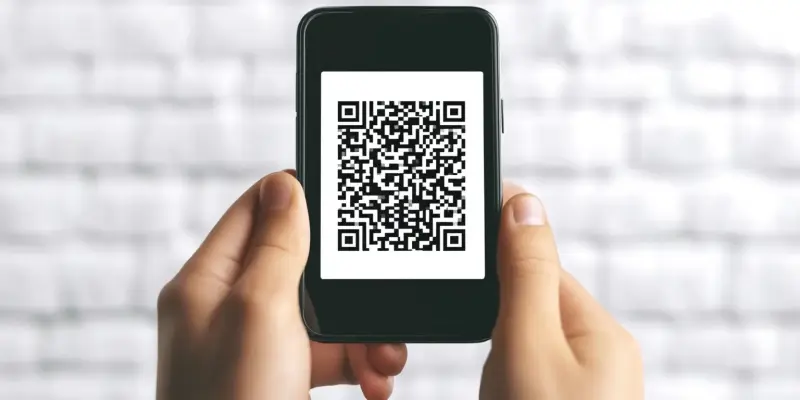The introduction of QR code payments for traffic fines in Ukraine could represent a significant shift in how drivers address violations, potentially transforming processes and experiences for both citizens and law enforcement. Ukrainian drivers will soon have the ability to pay fines directly at the site of the violation using their smartphones to scan QR codes, a marked advancement over traditional methods. The QR code initiative reflects a broader push towards digitalization, aiming to enhance efficiency and user convenience. By scanning a QR code, drivers eliminate the need to locate seldom-available or malfunctioning payment terminals, significantly reducing the time and effort involved in settling fines.
This forward-thinking approach intends to replace outdated terminals, thus modernizing Ukraine’s traffic fine system. The introduction of this innovative payment method stands to reduce processing time for the issuance and settlement of fines, potentially bringing it down to just a minute. This not only results in an expedited process for drivers but also assists patrol officers in quicker and more effective record-keeping. The QR code payments will be instantaneously updated in the electronic database, ensuring a more streamlined system for control and monitoring. The quick, real-time recording of payments also aids in accurate data tracking, making enforcement and follow-up processes far more efficient.
Current Pilot Program
The QR code payment system is presently in its pilot phase, having already undergone successful tests in the Chernivtsi and Vinnytsia regions. These test runs have demonstrated promising results, indicating the potential for widespread adoption. The pilot program has revealed significant advantages over older methods, with drivers and officers reporting a marked improvement in convenience and ease of use. The immediate usability of the QR code scanning process facilitates quick resolution of fines, thus minimizing delays and potential frustrations for all parties involved.
In the pilot regions, traffic patrol officers now carry QR codes that drivers can easily scan to pay fines on the spot. This system marks a notable shift from requiring the usage of payment terminals, which are often inconveniently located or out of service. By sidestepping these issues, QR code payments remove a significant bottleneck from the fine payment process, ensuring smoother interactions between drivers and traffic authorities. Additionally, the immediate update of payment status in the electronic database enhances transparency and prevents issues such as lost receipts or unrecorded payments, which were common with the old system.
Advantages of QR Code Payments
One of the key advantages of adopting QR code payments is the elimination of the need to seek out or wait for a free terminal, which has historically been a common pain point for drivers. Drivers subjected to traffic fines can find the process cumbersome and time-consuming under the old system, as they need to find and use functional payment terminals, which may be scarce. The ability to settle fines directly through a smartphone not only simplifies the process but also reduces the amount of time taken to issue and pay fines. This is a significant improvement over the previous method, where the lack of readily available terminals often resulted in prolonged delays.
Immediate recording of payments in the electronic database represents another considerable advantage, enhancing control and transparency. With the new system, once a fine is paid via QR code, the information is instantly captured and updated in the relevant databases. This digitalization reduces the risk of errors and ensures that all payments are properly monitored and recorded. It also enables authorities to promptly verify fine payments, reducing potential disputes. Moreover, this real-time update fosters a more accountable and transparent system, as all transactions are verifiable and trackable from the moment they occur.
Future Implementation Plans
Encouraged by positive feedback from the pilot regions, Ukrainian officials are planning to implement the QR code payment system in Kyiv soon, with ambitions for nationwide adoption. The encouraging initial results from Chernivtsi and Vinnytsia regions suggest that this modern payment method can be successfully extended to other parts of the country. Launching in Kyiv, the country’s bustling capital, marks a critical next step in scaling the initiative. The plan underscores Ukraine’s commitment to integrating digital solutions into public services, ultimately aiming to make governmental processes more efficient and citizen-friendly.
As part of broader modernization and digitalization efforts, the QR code payment initiative ties into a nationwide strategy to enhance public services’ technological infrastructure. By going digital, Ukraine not only aims to improve day-to-day interactions between citizens and state services but also seeks to position itself as a forward-thinking nation embracing the digital age. A future where traffic fines are paid effortlessly via QR codes could inspire further technological innovations across other sectors of public administration, showcasing Ukraine’s potential as a leader in public service modernization.
Modernization and Digitalization
The introduction of QR code payments for traffic fines in Ukraine signifies a major change in how drivers handle violations, potentially improving experiences for both citizens and law enforcement. Ukrainian drivers will soon be able to pay fines directly at the site of the infraction by scanning QR codes with their smartphones, an advancement over traditional methods. This QR code initiative is part of a broader push towards digitalization, aiming to improve efficiency and user convenience. By scanning a QR code, drivers bypass the need to find often unavailable or malfunctioning payment terminals, greatly reducing the time and effort needed to settle fines.
This progressive approach aims to replace outdated terminals, modernizing Ukraine’s traffic fine system. Introducing this innovative payment method could reduce processing time for issuing and settling fines to just a minute. This expedites the process for drivers and helps officers keep records more quickly and effectively. QR code payments will be instantly updated in the electronic database, creating a more streamlined system for control and monitoring. The rapid recording of payments also improves data tracking, making enforcement and follow-up procedures much more efficient.

